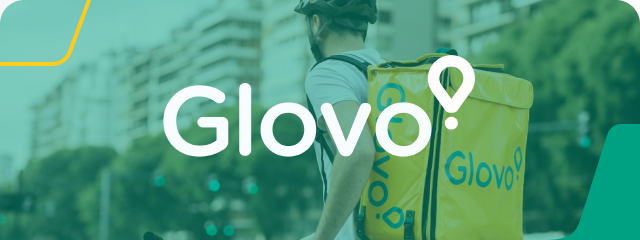- Solutions
- Solutions primary
- BY TEAM
- BY INDUSTRY
- BY USE
- BY SIZE
- View all solutions
- Solutions secondary
- Solutions primary
- AI
- Features
- Features primary
- Most popular
- first column
- second column
- third column
- fourth column
- View all features
- Most popular
- Features secondary
- Choosing the right plan
- Features primary
- Integrations
- Integrations primary
- MOST POPULAR
- first column
- second column
- View all integrations
- NEW
- first column
- second column
- View all integrations
- MOST POPULAR
- Integrations secondary
- Integrations primary
- Pricing
- Resources
- Resources primary
- Most popular
- first column
- second column
- third column
- Most popular
- Resources secondary
- Latest Blogs
- Try CloudTalk
- Resources primary
- Careers
FEATURE VS. FEATURE
IVA vs IVR: Learn the Difference + Pros and Cons
Intelligent Virtual Assistant and Interactive Voice Response are both automated systems to improve customer experience. But what’s the difference between IVA and IVR? Let’s dive into IVA vs IVR.
Intelligent
Virtual
Assistant
Interactive
Voice
Response
Difference Between IVR and IVA
Parameter
IVR
IVA
Main Function
IVR gathers information in order to route callers to the right destination—whether an agent or a simple pre-recorded message
IVA offers self-service resolutions without involving live agents
User Experience
IVR presents callers with a pre-recorded menu and requires them to pick an option
IVA asks open-ended questions or lets callers state their reason for calling
Capabilities
IVR offers self-service options for simple tasks but will need to escalate more complex queries to a human agent
IVA can understand more complex requests and respond in a human-like way
Availability
IVR can give basic assistance 24/7, but escalation depends on agent availability
IVA is available around the clock for all types of inquiry

What Is IVR & How Does It Work?
IVR (Interactive Voice Response) is an automated phone system that presents callers with a pre-recorded menu of options. Based on their responses, it either routes the calls to the right agent or department, or offers self-service assistance for basic queries and tasks.
In older versions, callers use their phone keypad to select options. Modern IVRs can understand simple voice commands, as they’re programmed to recognize key words and phrases.
What Is an IVA & How Does It Work?
An IVA (Intelligent Virtual Assistant or Intelligent Voice Assistant) is designed to understand and resolve customer queries without involving an agent, wherever possible. It uses AI-powered speech recognition technology to understand more complex requests, including the intent behind them.
IVAs offer responses that sound natural and human-like, and personalize them to each caller. You can configure the system to switch between different channels in the same interaction.


IVA vs IVR: Which Is Best For Your Business?
In the great IVR vs IVA debate, it depends what you want to achieve. If your aim is to streamline your call flow, IVR is ideal for routing calls. If most of your inbound calls involve FAQs and basic support requests, an IVR can handle those, too. Plus it’s also easier to set up and maintain.
If your customers typically have more complex needs, you might choose an IVA instead. IVAs also factor in sentiment and context to deliver accurate responses. Then again, smaller firms may still prefer the truly personal approach of routing calls to humans.
Pros and Cons of IVR and IVA
IVR
Support Intelligent Call Routing
IVR can work with your ACD (Automatic Call Distribution) feature to direct calls to the most suitable agent for the task. You configure your own routing rules, from fixed-order to skills-based routing to best suit your business and customers.
Boost Customer Experiences
IVR and smart routing reduces wait times, as callers don’t have to wait for a human attendant to route their call, and matches callers with agents who can help them quickly. IVRs also offer self-service options to answer FAQs and carry out simple transactions.
Improve Call Center KPIs
You’ll see an increase in first-call resolution (FCR), while average time to answer (ATA), average handle time (AHT), and call abandonment rates will fall.
Enhance Agent Engagement
Agents spend less time answering the same questions (which get handled by self-service IVR), and more on high-value interactions. They won’t be swamped with calls, or face irate customers who’ve been kept waiting. That all combines for greater agent engagement and morale.
Achieve Cost Savings
IVR helps you reduce operational costs because you won’t need extra staff to cover peak times—and agents have time to handle more calls per shift.
Confuse Callers With Poorly Configured Menus
If your IVR menu isn’t designed intuitively, customers can get frustrated by too many options or end up going round in circles. They may end up with the wrong agent or department which can damage customer satisfaction.
Limit Callers to Predefined Options
You can’t create a menu option for every single type of caller intent, so some customers will have to select the “next best” option—which means the query may take longer to deal with.
Restrict Provision of 24/7 Support
While IVRs can give basic assistance around the clock, calls that need human intervention will have to wait until contact center opening hours.
IVA
Improve Self-Service
Because IVAs can resolve more complex requests without human input, they can operate 24/7, handling a greater number of interactions in multiple languages.
Shorten Wait Times
IVAs resolve issues swiftly, reducing the amount of time each caller waits on hold. There’s no need to wait for the right agent to come back from a break or to finish up their current call, for instance.
Raise Agent Morale
IVAs can handle a wide range of issues without involving your human agents. Thanks to that reduced workload, agents can focus on resolving difficult issues—which is rewarding for them.
Expend More Effort to Set Up and Maintain
Sophisticated technology takes more effort to set up and maintain. You need to feed AI systems with data so they can learn as they go and provide accurate information.
Offers Less Empathy and Advanced Problem-Solving
AI is still developing. However human-like it sounds, an IVA is still a robot. It’s not yet capable of traits like empathy or of the high-level problem-solving that an agent can apply to complex interactions.
Appear Impersonal to Customers
Customers know they’re talking to a machine, and they may feel that your business lacks a personal touch if there’s no option to speak with a human.
OUR FEATURES
Discover 4 most popular
VoIP features

Key Elements of IVR Solutions
It’s essential that your IVR allows you to build completely customized call flows and menus, tailored to your customers’ needs. A drag-and-drop Call Flow Designer makes it easy for non-IT folks.
The IVR system must work smoothly with your ACD to route calls to the right place every time, and pass on the information collected from callers. It’s best to implement an IVR with multilingual capabilities, too, especially if you’re a global business.
Key Elements of IVAs
An IVA with built-in Natural Language Programming (NLP) and Natural Language Understanding (NLU) will be able to grasp the context and intent of a request and respond (almost) like a human. Machine learning technology means the system constantly updates itself with new data.
IVAs can interpret input from different languages and run sentiment analysis. They should have the ability to switch between channels during interactions, and offer customers a callback if the queue is longer than usual.


Common IVR Use Cases
IVR is typically used by businesses with high call volumes, to optimize call flows and create a fair workload for agents. As well as empowering intelligent routing, IVRs can give out information such as opening hours or product details, and carry out basic IT troubleshooting.
They can also assist customers with tasks like resetting passwords, checking account balances, making payments, and tracking orders and returns. Some businesses use IVR to collect customer feedback with surveys, or to perform security checks at the start of a call.
Common IVA Use Cases
IVA is used for in-depth customer support and assistance, handling difficult or urgent requests without involving an agent. It’s also handy for sales teams, capturing and even generating leads and scheduling appointments to reduce agent workload.
AI’s role in customer service can also include helping businesses with security and compliance. IVAs can verify caller identity using voice biometrics, and handle sensitive data such as health information and payment details.

CloudTalk is a data-driven solution for exceptional customer experience and intelligence is a key part of it.
Schedule a demo today and find out for yourself.
FAQs
How Does IVR Work?
When a customer calls your business, they hear a welcome message followed by the IVR menu. This may be a series of options such as “press #1 for sales, #2 for accounts, and so on” or the IVR may ask direct questions at each stage, such as “Would you like option A, or option B?”
The caller may be asked to speak their selection aloud rather than using their keypad, or even state their reason for calling in their own words. Conversational IVR systems use NLP to understand what the customer says and trigger an appropriate action.
Larger companies may also use submenus, where each option leads to further options. If the caller is confused or makes no selection, the IVR will replay the original menu. There should always be an option to speak to a human agent.
Depending on the selection or command, the IVR determines whether to assist the caller with a simple task, or place the call in a queue for a specific agent or department.
If a call is placed in the queue, this is where the ACD takes over. The IVR tells the ACD where to route the call, following the rules you’ve implemented. You might choose to route by agent availability, by idle time, in a fixed sequence, or based on agent skills.
If there’s nobody available to take the call, the IVR will invite the caller to try a different option, like leaving a voicemail or receiving a callback later—while keeping their place in line.
How Do IVAs Work?
IVAs also start with a welcome message, but instead of running through a menu, they allow the customer to tell them what they want. NLP and NLU technology enables the system to understand the intent and the context as well as the actual words spoken by the caller.
An IVA can interpret multiple languages and understand heavy accents, slang, and colloquialisms. With sentiment analysis, they can detect how the customer is feeling. For instance, if the caller is becoming upset or frustrated, the IVA can automatically route the call to a human agent.
However, the aim is to resolve issues quickly without needing to transfer the call. The IVA will search through resources (customer history or company knowledge bases, for example) and provide a relevant and accurate response. It’ll do this in a human-like way, sounding like a natural conversation.
IVAs also use machine learning, so they’re capable of becoming smarter with every interaction.
What’s the Difference Between an IVA and a Chatbot?
The key difference is that chatbots are text-based tools, so customers need to type their questions or click on the options offered—whereas IVAs are typically voice-activated.
Basic chatbots offer the customer a couple of options, such as “Do you want to pay a bill, check your balance, or change your password?” They can recognize key words and phrases and generate responses automatically, but these are limited.
IVAs are able to hold complete conversations and understand the nuances in customer responses. They can handle complex requests, while chatbots often have to escalate to a human.
What’s the Difference Between IVA and IVR Pricing?
The cost of IVA and IVR can vary depending on the vendor, features, and level of customization. In general, you can expect IVA systems to cost more because the tech is more sophisticated (although some IVRs do include AI-powered features).
IVA is usually sold as a standalone product. IVR is typically part of a wider solution such as CloudTalk’s AI-powered business calling solution, which starts at $25 per user/month. You can compare this to the cost of other software in our IVR price guide.
How Can You Set Up and Customize IVR With CloudTalk?
You can easily configure CouldTalk’s IVR feature to meet your needs. You can set up personalized call flows and adjust things like business hours with no IT knowledge required.
Just log in to your CloudTalk dashboard, and select the phone number to which you want to add a new call flow. As you build the branches of your phone tree, the structure will appear onscreen in the form of a flow chart.
You can add different settings and “actions” such as pre-recorded IVR messages to each step, and add your business hours. Choose how many seconds you’ll give the caller to respond, and create a failover option or have the system repeat the menu automatically.
This is also where you set up the routing rules that the ACD will follow. Skills-based routing ensures callers are matched with an agent who has the right skillset for the query, while caller-based routing pulls in data from your CRM or helpdesk to provide context.
The Preferred Agent feature lets you route customers to agents already familiar with their case. You can also create a VIP queue or redirect callers to voicemail or an alternative number.























